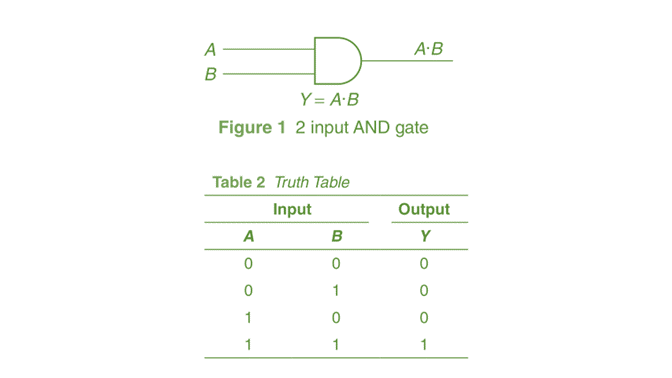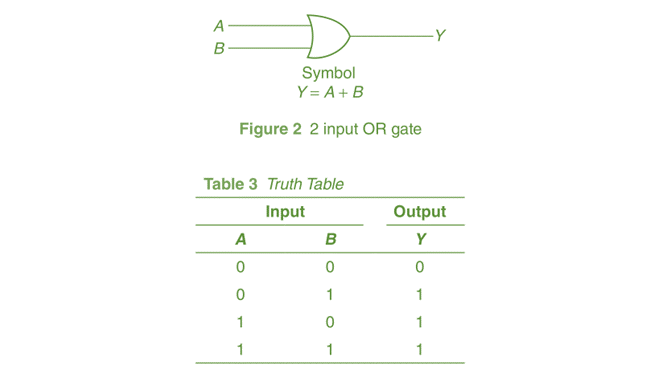- A 0
- B 2
- C 4
- D 6
Bitwise Operators - Quiz
- A Head
- B Hand
- C Foot
- D Leg
Results:
🟢 Correct Answers: 🔴 Wrong Answers:
🟢 Correct Answers: 🔴 Wrong Answers:
Login to save results
Time Left: 05:00
Quiz Information
Quiz Information
Quiz Platform FAQ
General Information
- Number of Questions: Each quiz consists of 10 questions.
- Time Limit: You have 30 seconds per question. The total time to complete the quiz is 5 minutes.
- Multiple Attempts: You can take the quiz multiple times to improve your score.
Results and Feedback
- Result Analysis: After completing the quiz, you will see a results page with the following details:
- Correct Option for each question.
- Your Selected Option for each question.
- Explanation for each answer to help you understand why it is correct or incorrect.
- Percentage of Correct Answers to show your overall performance.
- Interactive Features: The platform provides feedback on each attempt to help you learn and improve.
Important Instructions
- Do Not Refresh: Do not refresh the page while taking the quiz. Refreshing the page will end the current quiz and a new quiz will start.
- Saving Your Quiz: To save your quiz progress and questions, log in to your account. Once logged in, you can view saved quizzes in your profile section.
- Mandatory Selection: All questions are mandatory to select. If you do not select all 10 questions, you will not be able to submit the quiz. Once all questions are selected, you will be able to see the Submit button. If you wait until the end of the time, the quiz will be auto-submitted by the system, and you will be able to see your results.
Tips for Taking the Quiz
- Manage Your Time: Keep track of the time for each question to ensure you have enough time to answer all 10 questions.
- Review Explanations: After the quiz, read the explanations provided for each answer to enhance your understanding of the material.
- Retake the Quiz: If desired, take the quiz again to improve your score and reinforce your learning.
- Avoid Refreshing: To prevent losing progress, avoid refreshing the page during the quiz.
- Log In to Save: If you want to save your quiz progress, log in to your account and check your profile section for saved quizzes.
Quiz Analytics
Bitwise Operators - Quiz
Guest User Time Taken:
Time Taken: Questions: Answered: Not Answered:
 Correct Answer:
Correct Answer:
 Wrong Answer:
Wrong Answer:
 Percentage: %
Percentage: %
- A. 0
- B. 2
- C. 4
- D. 6
Remarks:
Explanation: 
Figure:

The bitwise AND operator (&) in Java performs a bitwise AND operation between the binary representations of two integers. In this case, 4 & 6 is equivalent to 0100 & 0110, resulting in 0010, which is 2 in decimal.
The result of the expression 4 & 6 using the bitwise AND operator in Java is 4.
Here's the explanation:
The bitwise AND operator (&) performs a bitwise AND operation between corresponding bits of two integers. In binary representation:
4in binary is100.6in binary is110.
Performing bitwise AND operation on each pair of corresponding bits:
<span class="pln"> </span><span class="lit">100</span><span class="pln"> </span><span class="pun">(</span><span class="lit">4</span><span class="pln"> </span><span class="kwd">in</span><span class="pln"> binary</span><span class="pun">)</span><span class="pln"> </span><span class="pun">&</span><span class="pln"> </span><span class="lit">110</span><span class="pln"> </span><span class="pun">(</span><span class="lit">6</span><span class="pln"> </span><span class="kwd">in</span><span class="pln"> binary</span><span class="pun">)</span><span class="pln"> </span><span class="pun">-----</span><span class="pln"> </span><span class="lit">100</span><span class="pln"> </span><span class="pun">(</span><span class="typ">Result</span><span class="pln"> </span><span class="kwd">in</span><span class="pln"> binary</span><span class="pun">)</span><span class="pln"> </span>
Converting the binary result 100 back to decimal gives 4, so 4 & 6 evaluates to 4.
<span class="pln"> </span><span class="kwd">public</span><span class="pln"> </span><span class="kwd">class</span><span class="pln"> </span><span class="typ">BitwiseANDExample</span><span class="pln"> </span><span class="pun">{</span><span class="pln"> </span><span class="kwd">public</span><span class="pln"> </span><span class="kwd">static</span><span class="pln"> </span><span class="kwd">void</span><span class="pln"> main</span><span class="pun">(</span><span class="typ">String</span><span class="pun">[]</span><span class="pln"> args</span><span class="pun">)</span><span class="pln"> </span><span class="pun">{</span><span class="pln"> </span><span class="com">// Perform bitwise AND operation</span><span class="pln"> </span><span class="kwd">int</span><span class="pln"> result </span><span class="pun">=</span><span class="pln"> </span><span class="lit">4</span><span class="pln"> </span><span class="pun">&</span><span class="pln"> </span><span class="lit">6</span><span class="pun">;</span><span class="pln"> </span><span class="com">// Display the result</span><span class="pln"> </span><span class="typ">System</span><span class="pun">.</span><span class="kwd">out</span><span class="pun">.</span><span class="pln">println</span><span class="pun">(</span><span class="str">"Result of 4 & 6: "</span><span class="pln"> </span><span class="pun">+</span><span class="pln"> result</span><span class="pun">);</span><span class="pln"> </span><span class="pun">}</span><span class="pln"> </span><span class="pun">}</span><span class="pln"> </span>
- A. 0
- B. 3
- C. 7
- D. 11
Remarks:
Explanation: 
Figure:

In Java, the bitwise OR operator (|) performs a bitwise OR operation on each bit of the operands. If either of the bits is 1, the result bit is set to 1. Here's an example of how you can use the bitwise OR operator in Java:
<span class="pln"> </span><span class="kwd">public</span><span class="pln"> </span><span class="kwd">class</span><span class="pln"> </span><span class="typ">BitwiseORExample</span><span class="pln"> </span><span class="pun">{</span><span class="pln"> </span><span class="kwd">public</span><span class="pln"> </span><span class="kwd">static</span><span class="pln"> </span><span class="kwd">void</span><span class="pln"> main</span><span class="pun">(</span><span class="typ">String</span><span class="pun">[]</span><span class="pln"> args</span><span class="pun">)</span><span class="pln"> </span><span class="pun">{</span><span class="pln"> </span><span class="com">// Given values</span><span class="pln"> </span><span class="kwd">int</span><span class="pln"> x </span><span class="pun">=</span><span class="pln"> </span><span class="lit">7</span><span class="pun">;</span><span class="pln"> </span><span class="com">// binary: 0111</span><span class="pln"> </span><span class="kwd">int</span><span class="pln"> y </span><span class="pun">=</span><span class="pln"> </span><span class="lit">3</span><span class="pun">;</span><span class="pln"> </span><span class="com">// binary: 0011</span><span class="pln"> </span><span class="com">// Bitwise OR operation</span><span class="pln"> </span><span class="kwd">int</span><span class="pln"> result </span><span class="pun">=</span><span class="pln"> x </span><span class="pun">|</span><span class="pln"> y</span><span class="pun">;</span><span class="pln"> </span><span class="com">// Display the result</span><span class="pln"> </span><span class="typ">System</span><span class="pun">.</span><span class="kwd">out</span><span class="pun">.</span><span class="pln">println</span><span class="pun">(</span><span class="str">"Result of bitwise OR: "</span><span class="pln"> </span><span class="pun">+</span><span class="pln"> result</span><span class="pun">);</span><span class="pln"> </span><span class="pun">}</span><span class="pln"> </span><span class="pun">}</span><span class="pln"> </span>
In this example, the binary representation of x is 0111, and the binary representation of y is 0011. After the bitwise OR operation, the result will be 0111, which is 7 in decimal.
Please note that the leading zeros in the binary representations are often omitted, but I included them for clarity. The | operator performs the OR operation bit by bit, so each corresponding bit in the result will be 1 if at least one of the corresponding bits in the operands is 1.
- A. 4
- B. 6
- C. 12
- D. 14
Remarks:
Explanation: 
Figure:

The bitwise XOR operator (^) in Java performs a bitwise exclusive OR operation between the binary representations of two integers. In this case, 9 ^ 5 is equivalent to 1001 ^ 0101, resulting in 1100, which is 12 in decimal.
The bitwise XOR operator (^) in Java performs a bitwise XOR operation on each bit of the operands. If the bits are different, the result bit is set to 1; otherwise, it's set to 0. Here's an example:
<span class="pln"> </span><span class="kwd">public</span><span class="pln"> </span><span class="kwd">class</span><span class="pln"> </span><span class="typ">BitwiseXORExample</span><span class="pln"> </span><span class="pun">{</span><span class="pln"> </span><span class="kwd">public</span><span class="pln"> </span><span class="kwd">static</span><span class="pln"> </span><span class="kwd">void</span><span class="pln"> main</span><span class="pun">(</span><span class="typ">String</span><span class="pun">[]</span><span class="pln"> args</span><span class="pun">)</span><span class="pln"> </span><span class="pun">{</span><span class="pln"> </span><span class="com">// Given values</span><span class="pln"> </span><span class="kwd">int</span><span class="pln"> a </span><span class="pun">=</span><span class="pln"> </span><span class="lit">9</span><span class="pun">;</span><span class="pln"> </span><span class="com">// binary: 1001</span><span class="pln"> </span><span class="kwd">int</span><span class="pln"> b </span><span class="pun">=</span><span class="pln"> </span><span class="lit">5</span><span class="pun">;</span><span class="pln"> </span><span class="com">// binary: 0101</span><span class="pln"> </span><span class="com">// Bitwise XOR operation</span><span class="pln"> </span><span class="kwd">int</span><span class="pln"> result </span><span class="pun">=</span><span class="pln"> a </span><span class="pun">^</span><span class="pln"> b</span><span class="pun">;</span><span class="pln"> </span><span class="com">// Display the result</span><span class="pln"> </span><span class="typ">System</span><span class="pun">.</span><span class="kwd">out</span><span class="pun">.</span><span class="pln">println</span><span class="pun">(</span><span class="str">"Result of bitwise XOR: "</span><span class="pln"> </span><span class="pun">+</span><span class="pln"> result</span><span class="pun">);</span><span class="pln"> </span><span class="pun">}</span><span class="pln"> </span><span class="pun">}</span><span class="pln"> </span>
In this example, the binary representation of 9 is 1001, and the binary representation of 5 is 0101. After the bitwise XOR operation, the result will be 1100, which is 12 in decimal.
Remember, the XOR operator sets a bit to 1 if the corresponding bits in the operands are different.
- A. 0
- B. 7
- C. 8
- D. 15
Remarks:
Explanation:
In Java, the bitwise AND operator (&) and the bitwise NOT operator (~) can be used to perform bitwise operations on integers. The bitwise AND operator combines bits where both corresponding bits are 1, and the bitwise NOT operator flips each bit.
Here's an example:
<span class="pln"> </span><span class="kwd">public</span><span class="pln"> </span><span class="kwd">class</span><span class="pln"> </span><span class="typ">BitwiseAndNotExample</span><span class="pln"> </span><span class="pun">{</span><span class="pln"> </span><span class="kwd">public</span><span class="pln"> </span><span class="kwd">static</span><span class="pln"> </span><span class="kwd">void</span><span class="pln"> main</span><span class="pun">(</span><span class="typ">String</span><span class="pun">[]</span><span class="pln"> args</span><span class="pun">)</span><span class="pln"> </span><span class="pun">{</span><span class="pln"> </span><span class="com">// Given values</span><span class="pln"> </span><span class="kwd">int</span><span class="pln"> a </span><span class="pun">=</span><span class="pln"> </span><span class="lit">15</span><span class="pun">;</span><span class="pln"> </span><span class="com">// binary: 1111</span><span class="pln"> </span><span class="kwd">int</span><span class="pln"> b </span><span class="pun">=</span><span class="pln"> </span><span class="lit">7</span><span class="pun">;</span><span class="pln"> </span><span class="com">// binary: 0111</span><span class="pln"> </span><span class="com">// Bitwise AND operation</span><span class="pln"> </span><span class="kwd">int</span><span class="pln"> andResult </span><span class="pun">=</span><span class="pln"> a </span><span class="pun">&</span><span class="pln"> </span><span class="pun">~</span><span class="pln">b</span><span class="pun">;</span><span class="pln"> </span><span class="com">// Display the result</span><span class="pln"> </span><span class="typ">System</span><span class="pun">.</span><span class="kwd">out</span><span class="pun">.</span><span class="pln">println</span><span class="pun">(</span><span class="str">"Result of bitwise AND and NOT: "</span><span class="pln"> </span><span class="pun">+</span><span class="pln"> andResult</span><span class="pun">);</span><span class="pln"> </span><span class="pun">}</span><span class="pln"> </span><span class="pun">}</span><span class="pln"> </span>
In this example, the binary representation of 15 is 1111, and the binary representation of 7 is 0111. The bitwise NOT of b (~b) results in 1000. Then, the bitwise AND operation is performed between a and ~b, resulting in 1000, which is 8 in decimal.
This process involves performing a bitwise NOT on b and then performing a bitwise AND with a.
- A. 40
- B. 20
- C. 640
- D. 160
Remarks:
Explanation:
The left shift operator (<<) in Java shifts the bits of the left operand to the left by the number of positions specified by the right operand. In this case, m << n is equivalent to 00001010 << 00000110, resulting in 010100000000, which is 640 in decimal.
- A. 4
- B. 6
- C. 8
- D. 12
Remarks:
Explanation:
The right shift operator (>>) in Java shifts the bits of the left operand to the right by the number of positions specified by the right operand. In this case, p >> 2 is equivalent to 00011000 >> 2, resulting in 00000011, which is 6 in decimal.
- A. 2
- B. 4
- C. 8
- D. 16
Remarks:
Explanation:
The unsigned right shift operator (>>>) in Java shifts the bits of the left operand to the right by the number of positions specified by the right operand, filling the leftmost bits with zeros. In this case, q >>> r is equivalent to 00010000 >>> 00000011, resulting in 00000010, which is 2 in decimal.
- A. 3
- B. 5
- C. 6
- D. 7
Remarks:
Explanation:
The bitwise OR assignment operator (|=) in Java performs a bitwise OR operation between the variable on the left-hand side and the value on the right-hand side and assigns the result to the variable. In this case, a |= 3 is equivalent to 00000101 | 00000011, resulting in 00000111, which is 7 in decimal.
- A. 0
- B. 7
- C. 8
- D. 15
Remarks:
Explanation:
The bitwise AND assignment operator (&=) in Java performs a bitwise AND operation between the variable on the left-hand side and the value on the right-hand side and assigns the result to the variable. In this case, m &= 7 is equivalent to 00001111 & 00000111, resulting in 00000111, which is 7 in decimal.
- A. Head
- B. Hand
- C. Foot
- D. Leg
Remarks:
Explanation:
"হাত" হল মানবদেহের একটি গুরুত্বপূর্ণ অংশ, যা আমাদের বিভিন্ন কাজ করতে সাহায্য করে। হাতের সাহায্যে আমরা ধরতে, ছুঁতে, লিখতে, আঁকতে এবং নানান কাজ করতে পারি। ইংরেজিতে "হাত" শব্দটিকে "Hand" বলা হয়।